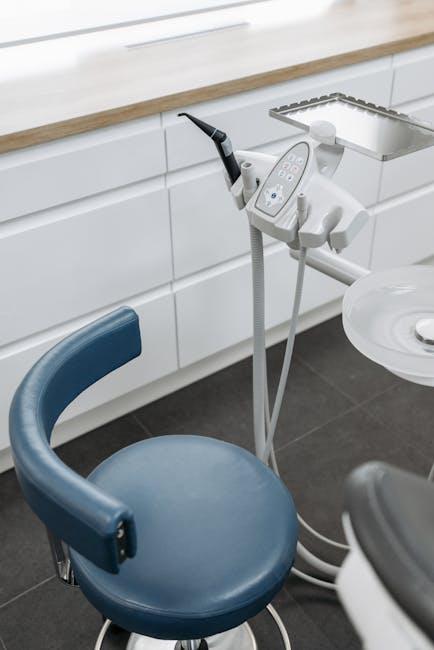
The Fee-for-Service Practice: The Dental Team—When Smaller is Better
In today’s dental industry, fee-for-service (FFS) practices face unique challenges and opportunities. One trend gaining traction is maintaining a smaller, more efficient dental team. Contrary to popular belief, a compact dental team can deliver superior patient care, improve office efficiency, and boost profitability. In this article, we’ll explore why “smaller is better” in fee-for-service dental practices and how you can optimize your team for success.
Understanding the Fee-for-Service Dental Practice Model
The fee-for-service dental practice operates by charging patients directly for specific treatments or procedures, rather than relying on insurance reimbursements or capitation payments. This model offers several advantages:
- Greater control over patient care decisions
- Flexibility in pricing and treatment plans
- Potential for higher profitability with premium services
However, it demands a highly efficient team structure to maximize patient satisfaction and operational fluidity.
Why Smaller Dental Teams Excel in Fee-for-Service Practices
Efficiency and personalized care are the cornerstone benefits of a smaller dental team in fee-for-service environments. Here’s why downsizing your team can be a smart strategic move:
1. Enhanced Patient Relationships
A smaller team fosters closer interaction and better rapport with patients. The dental team can personalize treatments, understand individual needs, and create a welcoming atmosphere that builds lasting trust.
2. Streamlined Communication
With fewer staff members, communication within the team becomes simpler and more direct. This reduces errors, scheduling conflicts, and mismanagement of patient care.
3. Cost Efficiency and Higher Profit Margins
Smaller teams reduce overhead costs such as salaries, benefits, and training expenses. This lean operation can improve the profit margins typical in fee-for-service practices.
4. Greater Flexibility and Adaptability
Fewer team members mean faster decision-making and the ability to quickly adapt to changing patient demands or business conditions.
Building the Optimal Small Dental Team for a Fee-for-Service Practice
Creating a highly functional small team requires strategic staffing and smart delegation of responsibilities. Below is an example of an ideal small team composition:
| Role | Key Responsibilities | Ideal Number |
|---|---|---|
| Lead Dentist | Diagnosis, treatment planning, complex procedures | 1 |
| Dental Hygienist | Cleanings, preventive care, patient education | 1–2 |
| Dental Assistant | Chairside assistance, sterilization, patient prep | 1 |
| Office Manager / Receptionist | Scheduling, billing, insurance processing | 1 |
Notice the balance: enough staff to cover essential functions, yet compact enough to stay agile and personal.
Benefits of a Smaller Dental Team in Fee-for-Service Practices
- Improved Patient Experience: Personalized attention ensures patients feel valued, enhancing loyalty and referrals.
- Reduced Staff Turnover: Strong team cohesion in smaller groups often improves job satisfaction and reduces burnout.
- Efficient Use of Resources: Less redundancy means better use of time and equipment, lowering operational costs.
- Faster Decision-Making: Small teams are more nimble, able to implement changes quickly to meet patient or practice needs.
Practical Tips for Managing a Smaller Fee-for-Service Dental Team
1. Hire Multipurpose Team Members
Look for staff who can take on diverse roles while maintaining high standards. For instance, dental assistants skilled in both chairside assistance and administrative tasks can be invaluable.
2. Foster Open Communication
Encourage daily team huddles or check-ins to align goals, troubleshoot issues, and share feedback.
3. Invest in Training and Cross-Training
Cross-training enhances flexibility. Team members prepared to cover each other’s tasks prevent workflow interruptions.
4. Leverage Technology
Use practice management software and digital tools to automate scheduling, billing, and patient reminders, reducing manual work and errors.
5. Focus on Quality Over Quantity
Your small team should prioritize top-tier care and exceptional service rather than volume-driven approaches.
Case Study: A Small Fee-for-Service Team’s Success Story
Dr. Emily Carson’s Practice transitioned from a larger multi-personnel team to a streamlined 5-person operation operating strictly on fee-for-service payments. Within a year, they reported:
- A 30% increase in patient satisfaction scores
- Reduced average appointment wait times by 20%
- A 25% boost in net revenue due to lower overhead and enhanced patient retention
Dr. Carson credits success to focused recruitment, robust training, and a patient-first approach enabled by a smaller team.
First-Hand Experience: Insights from a Fee-for-Service Dental Hygienist
“Working in a small fee-for-service team means I get to know each patient personally and contribute meaningfully to their care. We communicate closely, and that teamwork translates into smoother days and happier patients,” shares Hannah Lee, a licensed dental hygienist with 6 years of experience.
Conclusion
The fee-for-service practice thrives with a dental team that balances efficiency, expertise, and personal connection—with smaller often being better. Streamlining your team can increase patient satisfaction, improve operational workflow, and bolster your practice’s profitability without sacrificing care quality.
Whether you’re considering downsizing or fine-tuning your existing staff, adopting a smaller, more versatile dental team can position your fee-for-service practice for long-term success. Embrace this approach, invest in your people, and watch your dental practice flourish.


